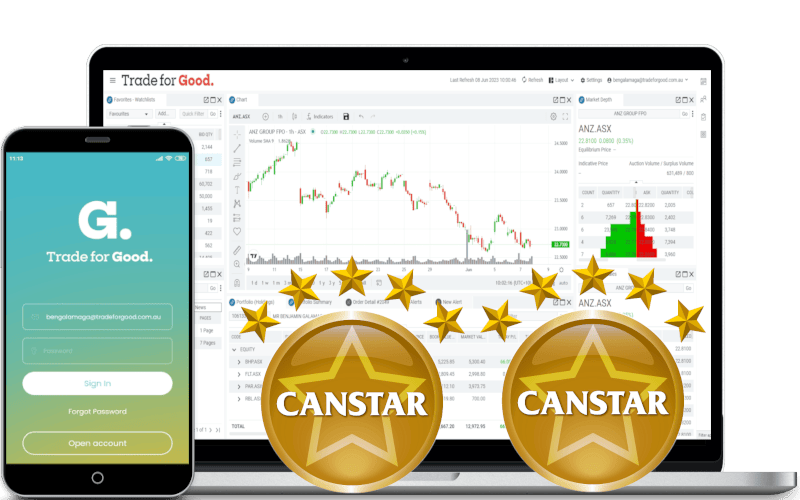What is Greenwashing?

Greenwashing in investing refers to the practice where companies, investment funds, or financial products falsely market themselves as environmentally friendly or sustainable in order to attract investors interested in Environmental, Social, and Governance (ESG) criteria.
Essentially, it involves exaggerating or misrepresenting the environmental benefits of a product, service, or strategy to capitalize on the growing demand for ethical and sustainable investing.

Key Characteristics of Greenwashing:
Misleading Claims:
Companies or funds claim to be “green” or environmentally sustainable but fail to take meaningful actions to improve sustainability or minimize environmental impact.

Lack of Transparency:
There’s often insufficient or vague information provided to back up sustainability claims, making it difficult for investors to verify the company’s true environmental practices.

Superficial Changes:
Companies may make small, symbolic changes (like using eco-friendly packaging) while neglecting more significant environmental issues in their core operations.

Examples of Greenwashing in Investing:
Funds Marketing as ESG-Compliant:
An investment fund may label itself as an “ESG fund” but continue to invest in companies with poor environmental or social track records, such as fossil fuel companies or those with questionable labor practices.

Corporate Greenwashing:
A company might emphasize small environmental initiatives (e.g., recycling programs) while their larger business operations, such as oil drilling or deforestation, continue to harm the environment.

How can you check if your fund is greenwashing?
To check if a fund is greenwashing, meaning falsely presenting itself as environmentally or socially responsible, you can follow these steps to verify its authenticity and assess whether it truly aligns with ESG (Environmental, Social, and Governance) criteria:
Examine the Fund’s Holdings
Look at the underlying investments:
Review the companies the fund is invested in. If the fund claims to be sustainable but invests in sectors like fossil fuels, tobacco, or companies with poor labor practices, it could be greenwashing.

How do you view the underlying investments?
The easiest way is to check the fund’s website, for example, let’s check FAIR. FAIR is Betashares Australian Sustainability Leaders ETF.
Website: https://www.betashares.com.au/fund/australian-sustainability-leaders-etf/
Scroll down to the Holdings and Allocation, then inspect the Portfolio Holdings.
Analyse the holdings for sectors and industries:
A truly ESG-focused fund should avoid industries that are harmful to the environment or society (e.g., coal, oil, gambling, weapons). Check if the fund excludes these sectors.

Check for ESG Ratings and Certifications
Certifications:
Look for certifications from reputable bodies to see if the fund has been certified or rated positively by these organizations, it’s a good sign that it’s aligned with sustainable principles.
The Betashares Australian Sustainability Leaders ETF (ASX: FAIR) has been certified by the Responsible Investment Association Australasia according to the strict operational and disclosure practices required under the Responsible Investment Certification Program. See www.responsiblereturns.com.au for details

Read the Fund’s ESG Report
Look for transparency:
A genuine ESG fund will provide detailed, transparent reporting on its environmental, social, and governance practices. Review the fund’s sustainability reports, which should outline the specific ESG criteria used, the metrics for measuring impact, and examples of how investments align with sustainability goals.
Look for measurable impacts:
The reports should go beyond broad statements and provide quantitative data, such as carbon emissions reduction, water usage, or diversity initiatives. If a fund’s ESG report lacks concrete examples, it might be greenwashing.

Review the Fund’s ESG Policy
Check the fund’s ESG strategy:
A true ESG fund should have a well-defined ESG policy that explains how it integrates environmental, social, and governance factors into its investment decisions. The policy should be accessible and clearly outline how the fund selects, evaluates, and monitors its investments based on ESG criteria.
Avoid vague language:
Watch out for broad or generic language like “we consider ESG factors” without details on how those factors are integrated into the investment process. Lack of specific guidelines can indicate greenwashing.

Check for ESG Exclusions
Negative screening:
Many ESG funds apply exclusions, meaning they avoid investing in industries or companies that harm the environment or society, such as fossil fuels, weapons manufacturing, or child labor. If the fund claims to be ESG-focused but doesn’t exclude harmful sectors, it could be greenwashing.
Explicit criteria:
Look for clearly defined exclusions, such as avoiding companies with a certain carbon footprint or those violating human rights. Funds that don’t provide specifics may not be serious about sustainability.

Investigate Performance Claims
Avoid too-good-to-be-true claims:
Be cautious if a fund promises both high financial returns and sustainability. While it’s possible to achieve both, greenwashing funds may overstate their ESG benefits while neglecting financial performance risks tied to unsustainable practices.
Cross-check with other funds:
Compare the fund’s claims with other genuine ESG funds. If the performance claims are unusually optimistic, it could indicate greenwashing.

Evaluate Fund Manager’s ESG Track Record
Fund manager’s experience:
Look into the fund manager’s history with ESG investments. If they have limited experience in managing sustainable funds, the fund might be greenwashing.
ESG integration in other products:
Assess how ESG factors are integrated into the fund manager’s broader suite of products. A manager that offers only one or two “green” funds among many non-ESG products may just be catering to trends without real commitment to sustainability.
Check for Regulatory Compliance
ESG regulations and disclosures: In some regions, funds must comply with specific ESG-related regulations, such as the EU’s Sustainable Finance Disclosure Regulation (SFDR), which categorizes funds based on their ESG integration. Check if the fund adheres to any regulations or standards that ensure the legitimacy of its sustainability claims.
Legal actions:
Investigate whether the fund or its parent company has faced any accusations of greenwashing or misleading claims. If there have been legal challenges, it could be a red flag.

Summary of Steps to Avoid Greenwashing:
- Review Fund Holdings for alignment with ESG claims.
- Check ESG Ratings and Certifications from third-party agencies.
- Read Detailed ESG Reports for transparency and measurable impact.
- Examine the Fund’s ESG Policy for specific and actionable guidelines.
- Assess Engagement and Voting Practices to ensure active involvement in ESG improvements.
- Look for Exclusions of unsustainable or harmful sectors.
- Evaluate Performance Claims for overly optimistic or vague statements.
- Check the Fund Manager’s Track Record for credible ESG experience.
- Look for Regulatory Compliance and legal challenges related to greenwashing.
By following these steps, you can better assess whether a fund is genuinely committed to sustainable investing or simply greenwashing to attract investors.

What you learn here has been used in our Trade for Good software.
Click on the button to find our software education videos.
You can read more of our educational articles in the Trade for Good Learn section
Trade for Good Learn


